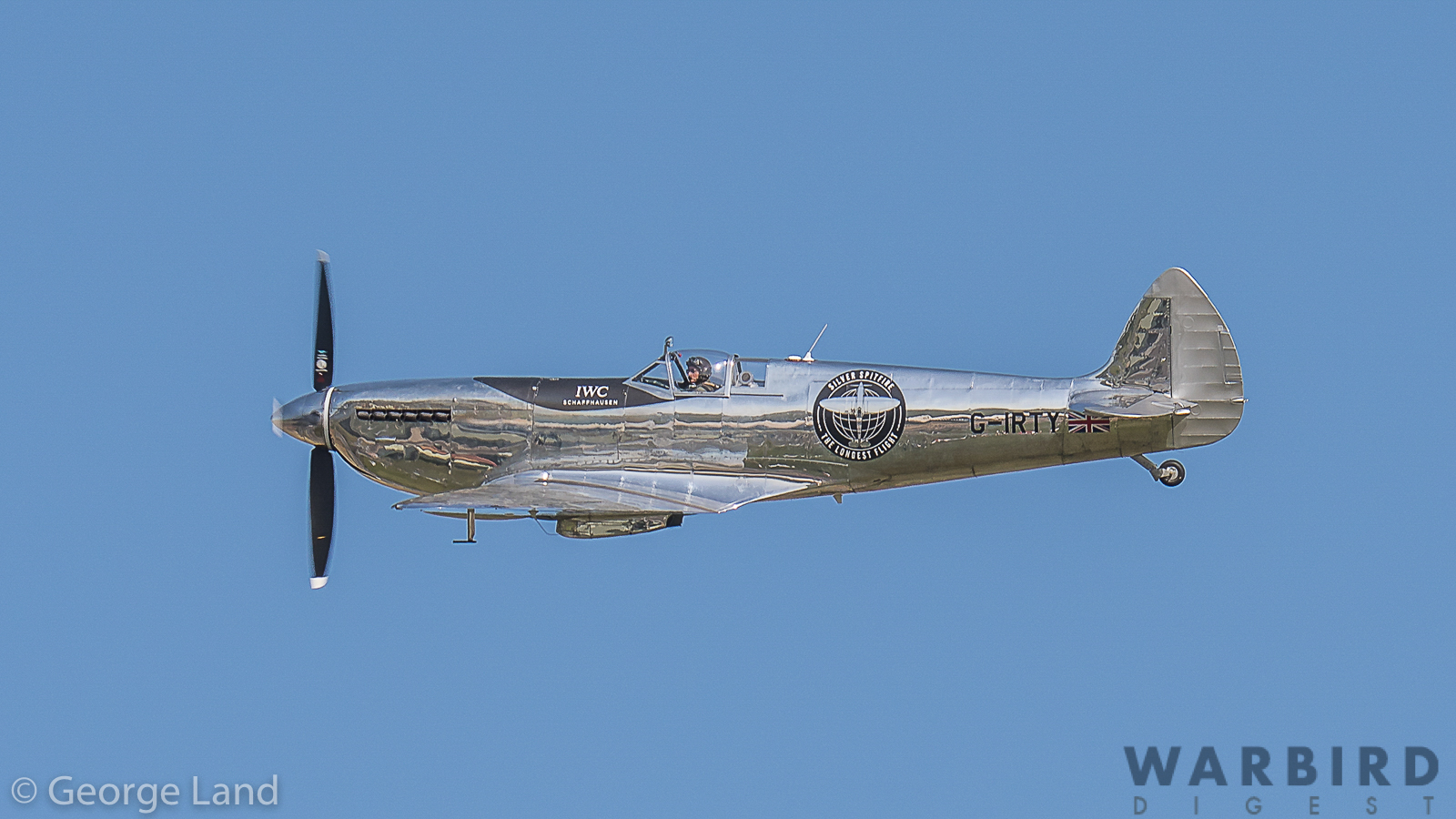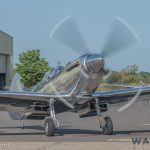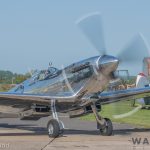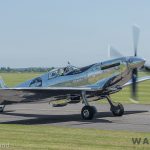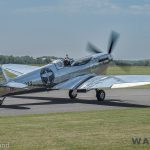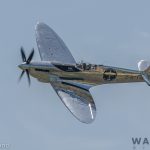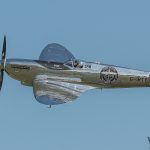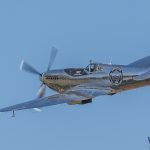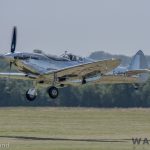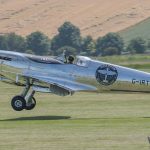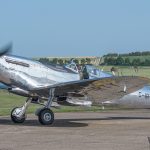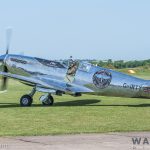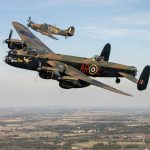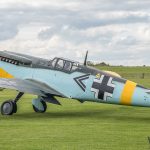Boultbee Flight Academy’s Supermarine Spitfire Mk.IX MJ271, aka the ‘Silver Spitfire’, has flown for the first time following her restoration with the Aircraft Restoration Company in Duxford, England. John Romain took the aircraft up for her first hop last Thursday, but she has flown several times since then. Our very own George Land was on hand to capture one of these flights, and despite her unconventional finish, it is hard to imagine anyone not being bowled over by how magnificent she looks.
This combat-veteran Supermarine Spitfire Mk.IX has an interesting history with several different military air arms, but started out as MJ271 with the Royal Air Force. Boultbee Flight Academy records her history on their website as follows…
On October 24th 1943 MJ271 is delivered from Castle Bromwich to 33 Maintenance Unit at RAF Lyneham.
From there she’s sent to 411, a Polish Repair and Salvage unit tasked with harmonising the guns and performing test flights before passing the aircraft on to an operational unit.
118 SQUADRON:
118 was a fighter Squadron that spent much of its time flying fighter sweeps and escorting bombers over occupied Europe.
Delivered to the Squadron in February 1944 the aircraft sees action in 16 operational sorties from RAF Detling near Maidstone in Kent which inluded withdrawal cover and escort for B-24, B-17 and B-26 bombers attacking V1 launch sites as well as fighter sweeps over France.
132 SQUADRON:
Formed in 1941 as a day fighter unit equipped with Spitfires 132 Squadron moved between defensive duties in Scotland and offensive duties in France from bases in the south of England.
MJ271 moved to 132 Bombay Squadron and followed the Squadron to RAF Ford in Sussex in April/May 1944.
She saw action in 28 operational sorties which included close escort for B-25 and B-26 bombers as well as dive bombing of targets on the French coast, before having a ‘wheels-up’ landing at RAF Ford during the night of May 9th 1944.
REPAIRED IN HAMBLE:
On May 15th she is moved to Hamble for repairs and readied for collection on July 24th. MJ271 then transfers to 39 Maintenance Unit at RAF Colerne on August 19th, 83 GSU at RAF Bognor on September 19th and lastly to RAF Westhampnett (home today to the Boultbee Flight Academy and known as Goodwood Aerodrome) with 83 GSU on November 4th.
401 SQUADRON:
401 Squadron were heavily involved in D-Day and the European offensive in 1944 operating in fighter-bomber, ground attack and armed reconnaissance operations.
The Spitfire moves with the Canadian pilots of 401 RCAF (City of Westmount) Squadron to the Netherlands on November 23rd at Volkel. After performing ten dive-bombing missions she is ‘over-stressed’ on December 24th and sent to RCAF 410 – a repair and salvage unit.
DELIVEREDTO RNAF:
On June 21st 1945 MJ271 is delivered to 29 Maintenance Unit at High Ercall before passing on to the Royal Netherlands Air Force (RNAF) on November 25th the following year with the designation H-8, later becoming 3W-8, the designation she would wear for some 70+ years before rolling into a hangar at Duxford to begin the restoration which is transforming her into airworthy condition once again, ready to begin her next adventure as the Silver Spitfire.
Her latest mission will be quite unlike those of most vintage ex-military fighter aircraft today though….
As stated earlier, MJ271 belongs to the Boultbee Flight Academy, based at Goodwood Aerodrome (the former RAF Westhampnett) near Chichester in West Sussex, England. Boultbee maintain a number of Spitfires, including a pair of two-seaters, which they use for flight training and flight experience rides for paying clients. But MJ271 is different. Boultbee had the aircraft restored such that almost every square inch of her bare aluminum airframe is now polished to a mirror finish, including the wings. She appears as if she were indeed made of silver, hence her new monicker as the ‘Silver Spitfire’. While this is an unusual choice in the present world, where civilian warbird paint schemes are considered passé and have largely been discarded in favor of authentic military liveries, it is arguable the Silver Spitfire’s already superlative beauty has been measurably enhanced by her present condition.
MJ271’s new polished scheme has been created for more than the aesthetic pleasure of her owners though. In just over a month, the aircraft will embark upon an audacious round-the-world flight, something never before achieved by a fighter aircraft of this vintage. This bold mission will take the aircraft to many nations which flew the Spitfire, and the polished scheme and her elegant lines will make the fighter an incredible draw for people wherever she lands… while also conveying a peaceful intent without her original warpaint. For more details on this endeavor, readers should check out the following link HERE. We will be sure to keep readers up to date on progress!
Many thanks indeed to George Land for the marvelous images of the Silver Spitfire in action!







